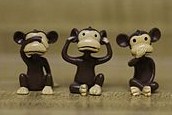Yesterday in town it was remarked on the benefits to allkind that would accrue from exchanging our customary diet of Big Macs for one of roadkill and Fucking pigeon (what’s the Latin?). Celtiberians consulted state that their race does not partake of the pigeon, and Juan Bautista Carrasco’s Mitología universal (1864) suggests that this may have been to avoid sacrilege:
La Paloma estaba dedicada á Venus …; las palomas según algunos autores alimentaron á Júpiter: los Asirios adoraron estas aves y sus enseñas militares eran palomas: creían que Semiramis después de muerta se habia metamorfoseado en paloma: los Ascalonitas tenían suma veneración á las palomas que no osaban matar ni comer temiendo alimentarse con los mismos dioses: Philon asegura haber visto en Ascalon infinito número de pichones que se mantenían y por los que tenian una veneración particular.
David Crossland reminds us that in broad historical terms this is nonsense:
The pigeon derives from the rock dove and was one of the first animals to be domesticated, some 10,000 years ago, in the Middle East. There are around 300 varieties of the bird. It was initially bred to be eaten, and its excrement, guano, was a prized fertilizer.
And Alexis Madrigal notes that pigeons have been driven to local extinction in quite recent times by peripatetic commercial netters:
Possibly the last great slaughter of pigeons in New York, of which we have record, was some time in the [18]70s. A flock had nested in Missouri in April, where they were followed by the same pigeoners, who again destroyed the squabs. The New York market alone would take 100 barrels a day for weeks without a break in price. Chicago, St. Louis, Boston and all the great and little cities of the North and East joined in the demand. Need we wonder why the pigeons have vanished?
[Alexis uses squab = young pigeon, which, sez the OED may be related to the Swedish dialect sqvabba, fat woman. Cf The Five Keys: I built a nest for a sweet little pigeon / But she flapped her wings and flu.]
I think there are references somewhere in Pío Baroja or Vicente Blasco Ibáñez to pigeon hunting in 19th century Madrid, but I don’t know of any others. Here’s an interesting recipe concept from Lur Maitea. They forget the tomatoes in the second part, so I’ve done the logical thing with them:
Ingredients
4 pigeons
2 bulbous green onions
4 cloves of garlic
2 ripe tomatoes, skinned
½l meat stock or water
¼l pacharán (see below)
Oil, salt, cornflourPreparation
Heat the oil in a casserole and sauté the onion until wilted. Clean the pigeons well and scorch them over a flame to remove any residual down. Then brown them slightly with the onion, add the garlic cloves, flambé with the patxarán, [crush and add the tomatoes,] and add the meat stock or water. Cook covered in a 350ºF/175ºC oven for around 20 minutes. Remove the pigeons when tender. Strain the broth, add salt and thicken it with cornflour, and serve with greens and a light red.
Pacharán is made like sloe gin, replacing the gin with anisette.
Similar posts
- Song in praise of salt cod
Toni is a retired fish porter in Barcelona harbour. I’ve lifted more weights than Arnol Shawarthanega, he says, and now I’m - Elogio de la casta y de lo casto
Con una canción, una receta, y palabras sabias de J.M. Aznar etc. - Spring is here (again)
I have been up the coast a couple of times this week (off again tomorrow) and I don’t think I’ve ever - Long live the prickly pear!
Death to the cochineal beetle and doom to the ecologists! - Poisoning pigeons
There’s a bunch of mad old guys in the neighbourhood who come out and feed the pigeons, which then crap all

What about the passenger pigeon? It was more than locally extinguished (as Alex says). See Wikipedia.
The Missouri quote almost certainly relates to the Passenger Pigeon, the Fucking Pigeon (Columba columba bilbenensis) never flocks in those numbers(100 barrels a day!).